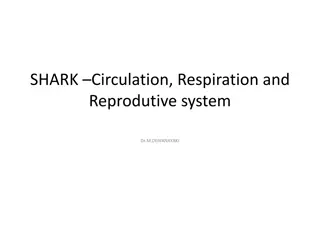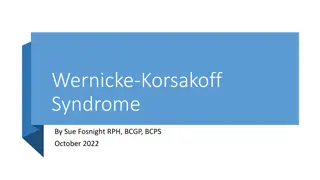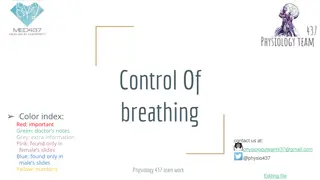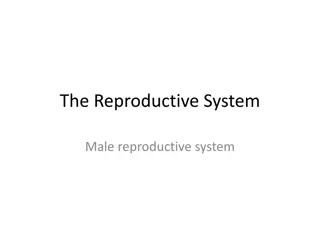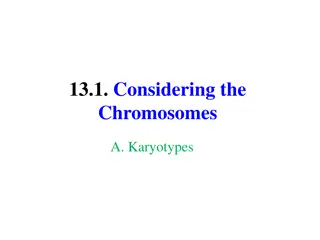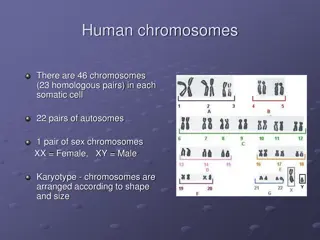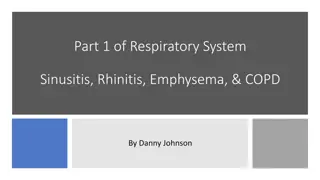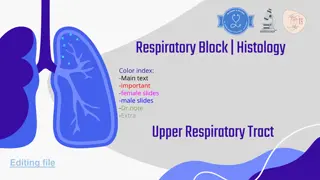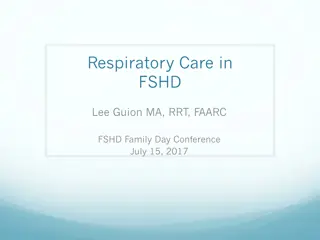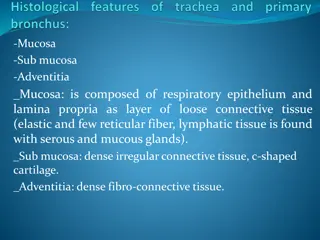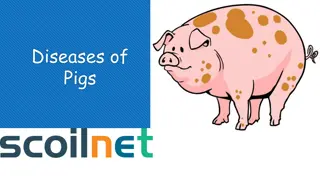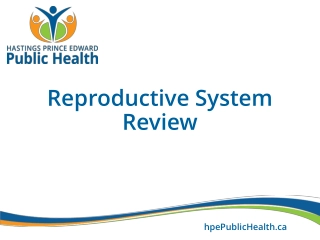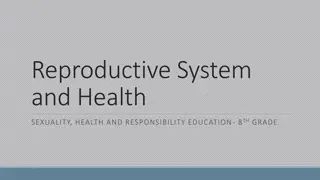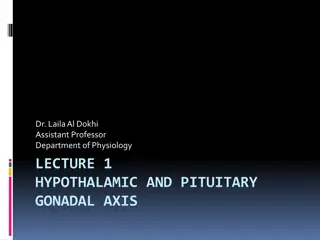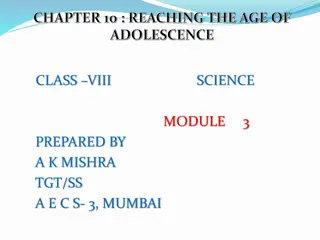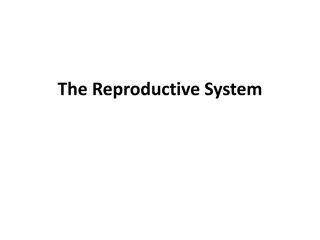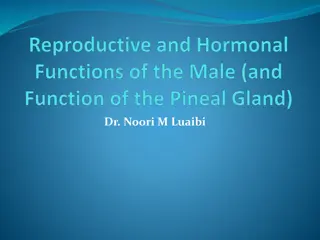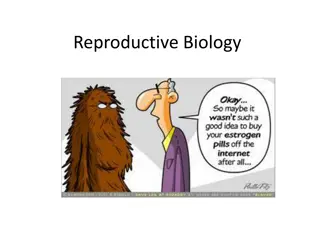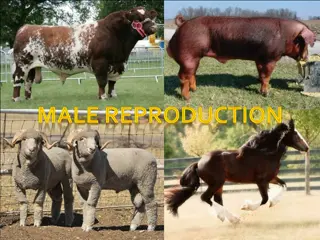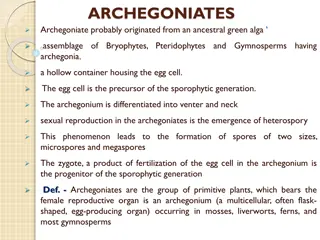Understanding Porcine Reproductive & Respiratory Syndrome (PRRS)
Porcine Reproductive & Respiratory Syndrome (PRRS) is caused by an RNA virus from the Arteriviridae family, susceptible to environmental factors like temperature, pH, and exposure to detergents. The virus exhibits genomic variability, leading to different levels of virulence and clinical symptoms in infected swine. Transmission occurs through direct contact and various bodily secretions, with the virus entering the body orally or via the nasal route. Understanding the pathogeny of PRRS involves factors like infective dose, immunity levels, stress, strain virulence, and the age of the animal, with initial replication in the tonsils and subsequent spread throughout the body, affecting organs like the lungs and uterus.
Download Presentation

Please find below an Image/Link to download the presentation.
The content on the website is provided AS IS for your information and personal use only. It may not be sold, licensed, or shared on other websites without obtaining consent from the author. Download presentation by click this link. If you encounter any issues during the download, it is possible that the publisher has removed the file from their server.
E N D
Presentation Transcript
Porcine Reproductive & Respiratory Syndrome (PRRS)
Etiology RNA- Virus -Family Arteriviridae -Gener Arterivirus Susceptible to the enviroment: - Temperature -PH -Exposition to detergents Virus with envelope 50-65 nm 1. Temperature Survives > 4 month -70 C to -20 C Temperature Viability 2. PH Survives 6,5- 7,5 Less contagious PH< 6 and PH> 7,65 3. Exposition to detergents: clorophorm or ether
Etiology RNA- Virus -Family Arteriviridae -Gener Arterivirus Virus 15kb NON Structural Proteins (infection proteins) - NSP9 NSP10 virulence -NSP2 mutation hability Structurals Proteins -Protein N in the nucleo capsid -Less variability -Important for diagnosis ELISA and RT-PCR -ORF5 ( VP5) most external protein -Usefull for molecular epidemiology philogenetic trees -ORF2, ORF3, ORF4 -Hipervariability heterogeity of the virus non vaccinations protection
Variability of the virus Genomic Variability of the virus European isolated - Lelystad virus 2 Prototypes Norteamerican VR 2332 Inside those prototypes Genetic variability -Mutation -Random Recombination Pathogenic Variability of the virus Difference on the clinic: Low virulence strains: positives farms without clinic symptoms Moderate virulence strains: positives farms with expected symtomatology Hight virulence strains: unexpected symptomatology + mortality of 40%
Epidemiology Transmission DIRECT contact Excretion: nasal secretion Saliva Colostrum Milk Urine Faeces Semen 1. Aerogene diffusion depends on the virulence 2. Semen Natural service and IA No continous Few amount Direct elimination 20-39 days post- infection First eyaculation Is acantoned: tonsils and retropharyngeal lymphnodes being able to produce a recirculation reaching the testicle again
Pathogeny 5 Important Factors: Infective dose Level of previous inmunity Estress Factors Virulence of the strain Age of the animal Virus enters orally or through the nasal route Research the tonsils First replication Passing through the lymphatic system retropharyngeal lymphnodes From the retropharyngeal lymph nodes blood infecting monocytes Distributing throughout the organism -Lung -Uterus of a pregnant female
Reproductive Pathogeny Depends on the time of the gestation Pregnant females 0-10 days : There are not changes Pellucid zone protect 10-30 days: Is able to infect the embrion (1,4% ) Reabsortions and irregular repetition of zeal 30-70 days ** Abortion of all fetuses Inmunocompetents >75 days (inmunocompetents) Late abortion big size Factors immunitary system virulence of strain 95 days (immunocompetents) No time for virus actuation Some big mumified fetuses Some weak animals -Low/moderate virulence survive (PI) -Hight virulence anyone survive
Reproductive Pathogeny Females -Reduces appetite -Fever 3-4 post-infection 39,9 - 40,1 -Premature farrowing and Abortion (end of the gestation) -Repetition of zeal 21-35 days post- cubrition -Mummified pigs -Variably sized weak-born pigs -Dead born rate Males -Loss of appetite & lethargy -Fever 3-4 post-infection 39,9 - 40,1 -Loss of libido -Decrease of semen production -Alteration of the spermatic quality -Altering the acrosome -Abnormal forms -Distal cytoplasmic drops
Respiratory Pathogeny Lynphonodes blood organs Lungs replication in alveolars macrophages destroying 40-60% pneumocytes type I and II Lungs without protection: - Intersticial pneumony -Secondary pathogen: Pasterurellas, Streptococcus, Staphylococcus -Fibrinous. - Suppurative: Streptococcus. - Hemorrhagic: Actinobacillus pleuroneumonie that produces hemolytic toxins. - Polyserositis: Haemophilus parasuis. Low airways damaged bronchopneumonia Symptoms: Cought Dyspnea, Orthopnea Decrease in the number of macrophages.
Injures PRRS virus multisystemic infection Gross lesions - are usually only observed in - are most marked in neonatal and young pigs Respiratory tissues Lynphoid tissues. Severe disease Lungs: -Mottled : tan and red -Fail to collapse -Cranioventral lobes are most affected -Diffuse fibrous adhesions -(pleura,lungs,pericardium) Interstitial pneumonia Lymph nodes -moderately to severely enlarged and tan in colour - some strains of virus, haemorrhagic Co- infection compicates the diagnosis
Microscopic Injures Microscpic analysis of tissues from necropsied animal Best tissues samples: Lungs Lymph nodes Tonsils Spleen Possibly brnochoalveolar lavage Hematoxylin and eosin stained lung -showing severe diffuse edema -interstitial fibrinosupporative pneumonia -with increased numbers of alveolar macrophage H&E stained lymph node -lymphoid depletion -severely decreased numbers of lymphoid follicies
Diagnosis 1. Clinical diagnosis - Reproductives and Respiratory symptoms 2. Epidemiologic diagnosis - All the farms are postives vaccinations ( homolog strains ) - Biosecurity 3. Anatomophatologic diagnosis
1. Clinical diagnosis Females -Reduces appetite -Fever 3-4 post-infection 39,9 - 40,1 -Premature farrowing and Abortion (end of the gestation) -Repetition of zeal 21-35 days post- cubrition -Mummified pigs -Variably sized weak-born pigs -Dead born rate Males -Loss of appetite & lethargy -Fever 3-4 post-infection 39,9 - 40,1 -Loss of libido -Decrease of semen production -Alteration of the spermatic quality -Altering the acrosome -Abnormal forms -Distal cytoplasmic drops Respiratory Symptoms: Cought Dyspnea, Orthopnea Decrease in the number of macrophages.
Diagnosis 1. Clinical diagnosis - Reproductives and Respiratory symptoms 2. Epidemiologic diagnosis - All the farms are postives vaccinations ( homolog strains ) - Biosecurity 3. Anatomophatologic diagnosis
4. Anatomophatologic diagnosis PRRS virus multisystemic infection Gross lesions - are usually only observed in - are most marked in neonatal and young pigs Respiratory tissues Lynphoid tissues. Severe disease Lungs: -Mottled : tan and red -Fail to collapse -Cranioventral lobes are most affected -Diffuse fibrous adhesions -(pleura,lungs,pericardium) Interstitial pneumonia Lymph nodes -moderately to severely enlarged and tan in colour - some strains of virus, haemorrhagic Co- infection compicates the diagnosis
4. Anatomophatologic diagnosis Microscpic analysis of tissues from necropsied animal Best tissues samples: Lungs Lymph nodes Tonsils Spleen Possibly brnochoalveolar lavage Hematoxylin and eosin stained lung -showing severe diffuse edema -interstitial fibrinosupporative pneumonia -with increased numbers of alveolar macrophage H&E stained lymph node -lymphoid depletion -severely decreased numbers of lymphoid follicies
Diagnosis- Laboratory tests 1. For virus isolation and RT-PCR (affected animal) Whole blood (EDTA) Serum Lungs Respiratory tract Spleen Tonsils Samples from mummified or aborted litters are unlikely to yield virus Isolation Cytopathic effects are evident in 1 4 days 2. For antibody testing ( serology) ELISA and IPMA and IFA Serum from up to 20 exposed animals IgM within 7 days IgG 14 days Humoral antibody titres reach a maximum 5-6 weeks after infection Antibody levels can drop quite quickly in the absence of circulating virus.
Prevention Hygienic sanitary measures - Biosecurity - Avoid the entrance of a different strain infected animals - Quarantine Period + Period for be infected with the local strain Vaccination: All the animals will be vaccinated 1. Dead vaccines Secure Not replication Less efficient less immunological answer 2. Live attenuated vaccines More efficient replication Immunological answer - higher vs homologous Abortion in pregnant females - partial versus heterologous





